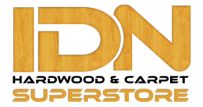Finding the right flooring for a busy household means prioritizing durability, scratch resistance, and easy maintenance. Engineered hardwood offers the natural beauty of the wood while providing extra stability and resilience against wear and tear. For families with pets and children, selecting the best options ensures a long-lasting and visually appealing floor.
Key Features of Pet- and Kid-Friendly Engineered Hardwood
Choosing engineered hardwood for an active home requires considering specific features that enhance its performance. Floors with a high Janka hardness rating, such as oak, hickory, or maple, are less prone to dents and scratches. Additionally, a durable top wear layer, preferably with an aluminum oxide or polyurethane finish, provides extra protection against daily activities.
A matte or wire-brushed finish can help conceal minor scuffs, while wider planks reduce the number of seams where dirt and pet hair can accumulate. Opting for a low-VOC or formaldehyde-free option is also beneficial in maintaining indoor air quality, making it a safer choice for children and pets alike.
Best Wood Species for High-Traffic Homes
The durability of engineered hardwood largely depends on the wood species used in the top veneer layer. Hickory is one of the hardest domestic options, offering excellent scratch resistance and a rustic appearance that masks signs of wear. Oak remains a popular choice due to its balance of strength and classic aesthetic, making it suitable for both modern and traditional interiors.
Maple is another strong contender, known for its fine grain pattern that helps disguise scratches. For those seeking a more exotic option, Brazilian cherry and acacia provide outstanding durability while adding warmth and character to a space. Choosing a harder wood species ensures that engineered hardwood can withstand the demands of an active home.
Maintenance Tips for Longevity
Proper care is essential to preserve the beauty and functionality of engineered hardwood in homes with pets and kids. Using area rugs and runners in high-traffic zones minimizes direct impact and prevents excess wear. Regular sweeping and dry mopping remove dirt and debris that could cause surface scratches.
Keeping pet nails trimmed and using felt pads under furniture legs can help maintain the floor’s finish. Spills should be wiped up promptly to prevent moisture damage, and choosing a water-resistant core construction adds an extra layer of protection against accidents. Establishing a consistent maintenance routine will keep engineered hardwood looking its best for years to come.
With the right combination of wood species, finish, and upkeep, engineered hardwood provides a stylish and durable flooring solution for families with children and pets. Prioritizing scratch resistance and easy maintenance ensures a home that remains both functional and visually appealing, no matter how active the household.
Read more:
Is Engineered Hardwood Good for Kitchens? Pros, Cons, and Best Practices
How to Maintain Engineered Hardwood Floors: Expert Tips for Long-Lasting Beauty
